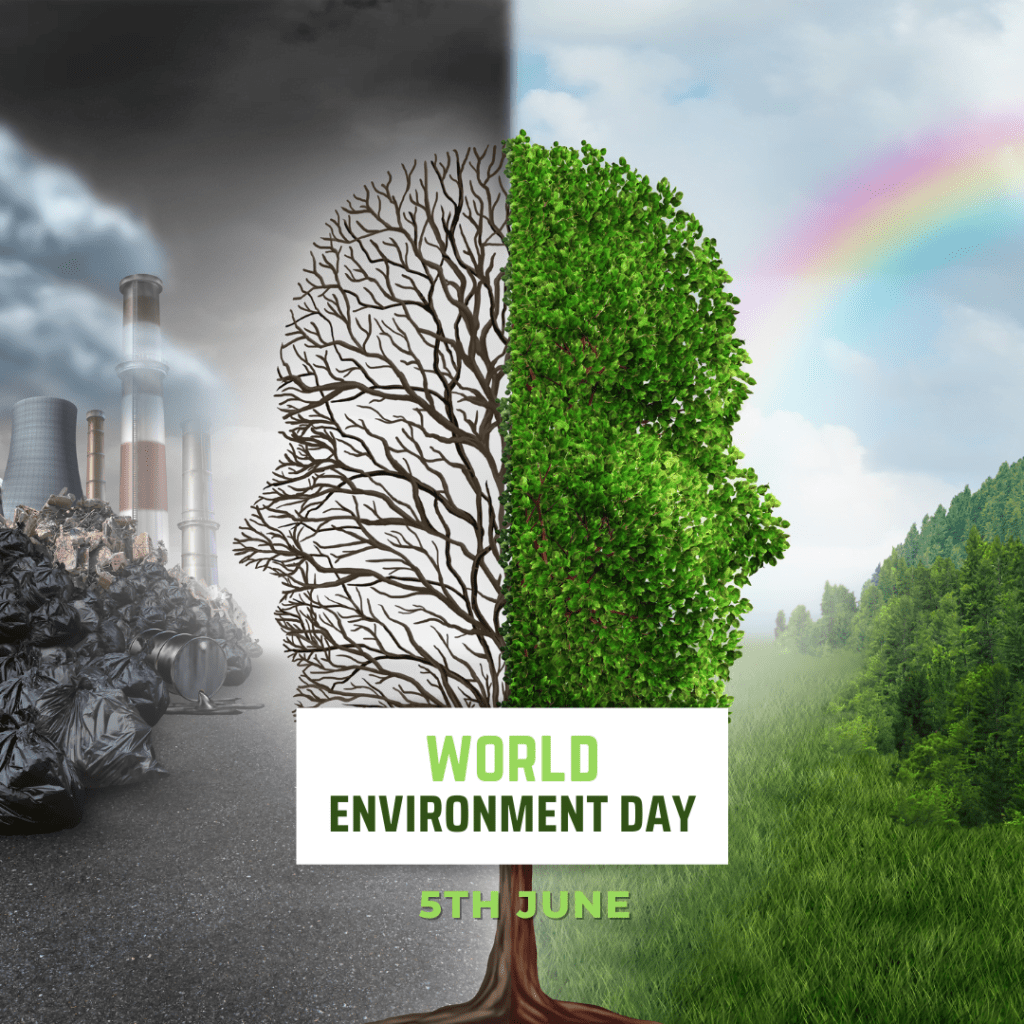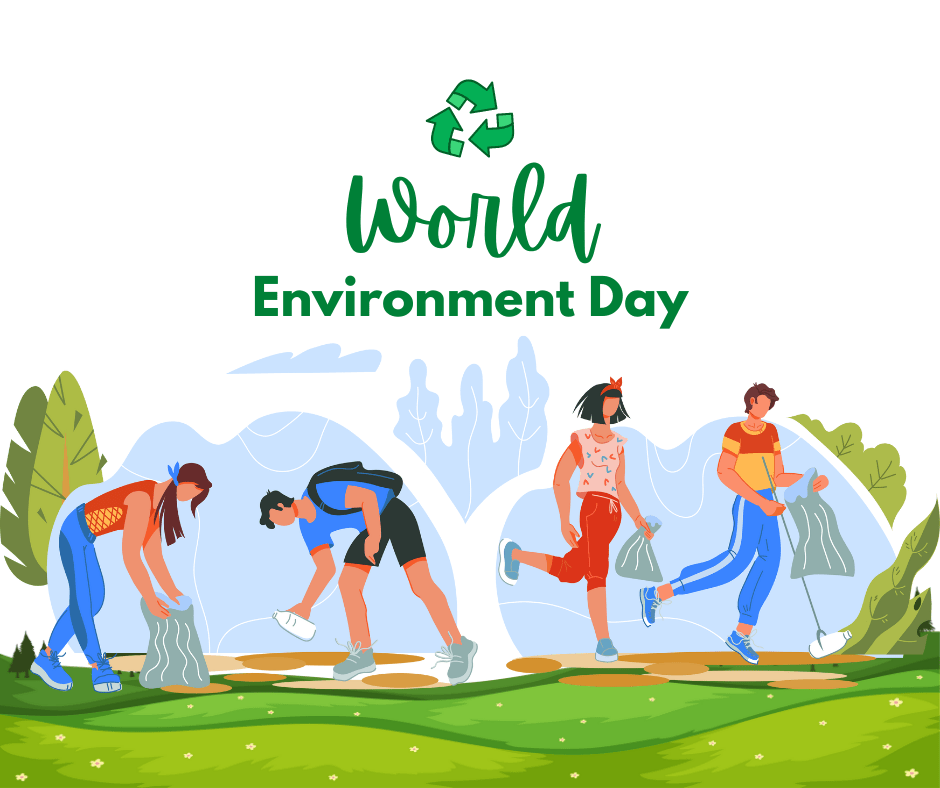World environment day is celebrated every year on 5th June. It is a significant event celebrated globally on this day by raising awareness of environment, concerns pertaining to environmental issues and encourages actions to protect our environment.
Table of Contents
Theme of World Environment Day 2024:
The theme for World Environment Day 2024, observed on 5th June every year, is “land restoration, desertification, and drought resilience”.
In 2024, World Environment Day hosting country is Saudi Arabia.

History of World Environment Day:
World Environment Day was first time observed in 1974 in the United States with the theme “Only One Earth.” The United Nations General Assembly established ‘World Environment Day’ in 1972, which was the first day of the Stockholm Conference on the human environment.
The Significance of World Environment Day:
World environment day on 5th June every year is celebrated as a day of action and reflection. This day gives us as a reminder of our individual responsibilities towards the environment. This day reminds us that not to celebrate the day only a symbolic occasion but to celebrate as proactively, encourage all around participation and find proactive solution for sustainable development.
On this event, more than 150 countries have been participated all over the globe and tries to develop policies and encourages to practice these policies for sustainable development. The governments, businesses, communities as well as individuals should act proactively and follow the policies strictly to rejuvenate our planet and makes it healthier planet.
The 2024 theme, “land restoration, desertification, and drought resilience” emphasizes the urgent need of proactive solutions to heal our planet. Over the years humans have been involved for damages of environment and now the time has come to find better solution to tackle the environmental challenges.
Human Factors for Environmental Challenges:
- For too long, humans have been exploiting and destroying the planet’s ecosystems.
- We have destroyed half of the wetlands.
- As much as 50 per cent of the world’s coral reefs have already been lost and up to 90 per cent of coral reefs could be lost by 2050, even if global warming is limited to an increase of 1.5 degrees Celcius.
- Ecosystem loss is depriving the world of carbon sinks, like forests and wetlands, at a time when humanity can least afford it.
- Global greenhouse gas emissions have grown for three consecutive years and the planet is one place for potentially catastrophic climate change.
What is an ecosystem?
An ecosystem is a community of plants and animals interacting with each other in a given area, and also with their non-living environments.
The non-living environments include weather, earth, sun, soil, climate and atmosphere.
The ecosystem relates to the way that all these different organisms live in close proximity to each other and how they interact with each other.
Ecosystem restoration:
Ecosystem restoration means preventing, halting, and reversing this damage – to go from exploiting nature to healing it.
Ecosystem restoration means assisting in the recovery of ecosystems that have been degraded or destroyed, as well as conserving the ecosystems that are still intact.
Reforestation:
Forests are the oxygen hub of our planet, often called as the lungs of our earth. It plays a crucial role of capturing and storing atmospheric carbon dioxide (CO2) and therefore biodiversity conservation. Reforestation initiatives like planting trees and protecting our forest may create a greater impact on sustainability of environment and mitigate climate change impacts.
Wetland Restoration:
Now a days, Lakes and coastlines become polluted because of poor waste management or an industrial accident. Therefore, Wetland restoration becomes the necessity to curb the damages of the environment. This wetland restorations are the restoration of water. This can control flood, enhance water quality and also support biodiversity. Therefore, many critical wildlife habitats can live and maintain the environmental balance.
Soil Rehabilitation:
Soil, specifically fertile soil is the pillar of sustainable agriculture and therefore a stable ecosystem. Soil restoration plays a crucial role of capturing and storing atmospheric carbon dioxide (CO2), reduce erosion and long term agricultural productivity. Soil restoration initiatives like cover farming and cropping, no till farming, use of organic fertilisers are used in present day. This programme may boost the soil fertility and environmental health.

Participation of Countries and Their Action:
Governments, NGOs, businesses, individuals of many countries throughout the globe participates to contribute for sustainable environment. Many activities are carried out by these organizations or countries worldwide such as plantation of trees, awareness programmes, educational workshops, water cleaning up, beach cleaning up etc.
Corporate Responsibility:
Many companies around the world take efforts for adopting green practices. Businesses play important role for environmental sustainability by reducing emissions, focusing on waste management and sourcing environmental friendly materials.
Government Policies:
Government should create policies pertaining to sustainable environment and necessary action plan should be implemented to execute these policies. Policies such as focus on renewable energy, sustainable agricultural development, protection of forest, water and soil are essential for addressing environmental challenges.
Involvement of Local Authority:
The implementation of any policies has to be worked out from grass root level. In this case the involvement of local authority is vital. This local authority can organize many initiatives such as clean-up drives, reforestation in local area, educational workshop, create campaign for awareness of environmental sustainability and its importance.

Conclusion:
World Environment Day 2024 acts as a reminder clock that everybody has responsibility to rejuvenate the health of our planet “earth”.
The theme “land restoration, desertification, and drought resilience” encourages us to take decisive actions to repair environmental damage, find out the solution and execute that for sustainable development and maintain a balance of the environmental eco-system.
Every action contributes to the accomplishment of the aim of environmental sustainability. These actions needs to be encouraged to restore, reimagine and recreate a better world for ourselves.


8 thoughts on “World Environment Day 2024: A Call to Action for Healthier Future”